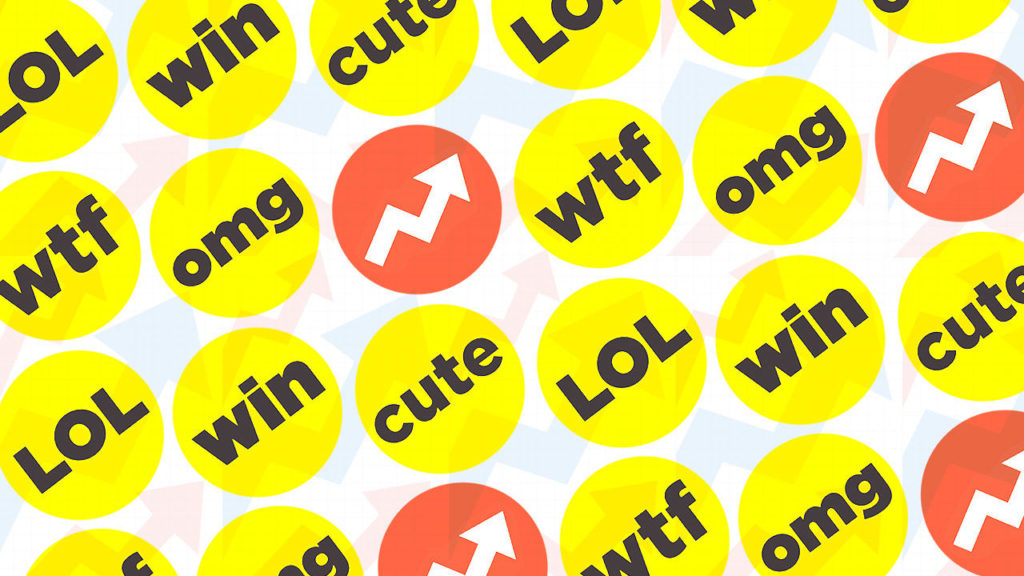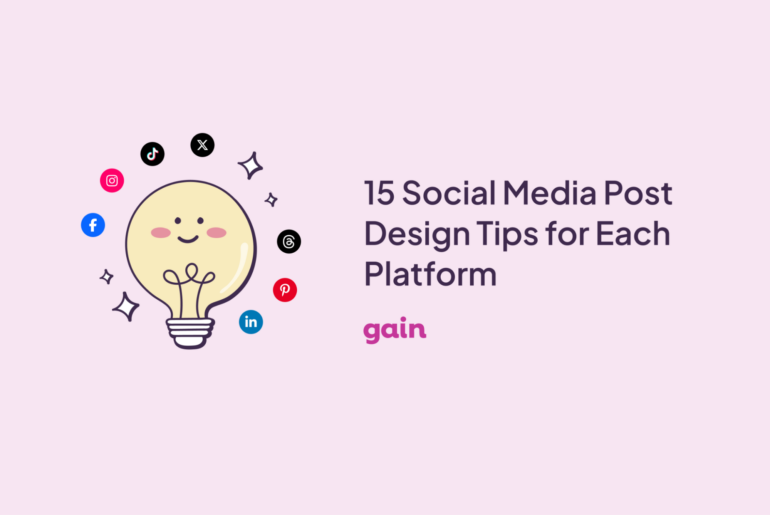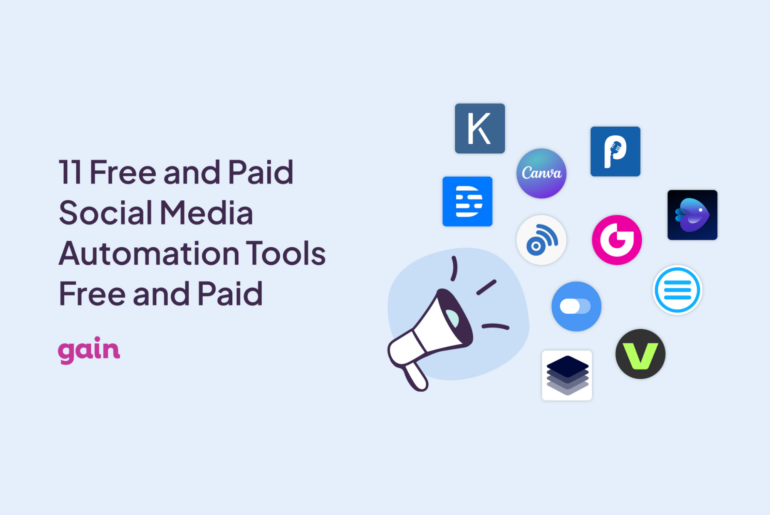1. Writing with readability in mind
A recent study by Scribblers found a commonality between The Huffington Post, CNN, and BuzzFeed content. After analyzing over 500 successful articles among these popular sites, Scribblers graded their “readability.” Though each platform has a different target audience, their content is written at varying elementary reading levels. In the graph below, you’ll see how BuzzFeed is directly compared to these other digital publications. BuzzFeed’s content is written at a 4th-grade reading level, while CNN content is written at a 7th-grade reading level. This is not to suggest that dumbing down your content is the answer, but rather understanding your audience’s preferences. BuzzFeed mainly aims their content at younger demographics. They know their market and adjust their writing style accordingly. Even CNN’s content benefits from being written at a 7th-grade reading level so it can be quickly consumed by a large audience. With so much content available on the Internet today, presenting your message in a simple and easily digestible way is necessary if it’s going to attract a massive audience.
This Yoast article offers great guidelines for content creators looking to improve their skills in writing content with an excellent readability score, such as:
This is not to suggest that dumbing down your content is the answer, but rather understanding your audience’s preferences. BuzzFeed mainly aims their content at younger demographics. They know their market and adjust their writing style accordingly. Even CNN’s content benefits from being written at a 7th-grade reading level so it can be quickly consumed by a large audience. With so much content available on the Internet today, presenting your message in a simple and easily digestible way is necessary if it’s going to attract a massive audience.
This Yoast article offers great guidelines for content creators looking to improve their skills in writing content with an excellent readability score, such as:
- Keep most sentences under 20 words
- Rarely use words with more than three syllables
- Include transition words frequently, i.e., most important, because, thus, or besides that.
 This screenshot above shows how the SEO Yoast plugin grades your content. The test generates a score between 1-100 and the lower the score, the more difficult your post is to read.
This screenshot above shows how the SEO Yoast plugin grades your content. The test generates a score between 1-100 and the lower the score, the more difficult your post is to read.

Source: Wikipedia
The jury is still out on whether readability is a factor in the Google PageRank Algorithm. However, if your piece is easy to read it will increase engagement levels for your post, and ultimately, improve critical metrics like bounce and exit rates. Depending on your target audience, simplifying your message can help expand your content’s reach. Like BuzzFeed, you can target a broad audience with the consistent use of simple language and a focus on keywords.2. Don’t be a robot
When creating content, it’s important to ask, “Will this bring value to my target audience?” “Would they interact with this content?” When your content solves a problem and informs your audience, they are more likely to revisit your site. As humans, we are most attracted to stories that play into our emotions and help us learn new information. BuzzFeed has been tugging on the emotional heart strings of readers since the very beginning. If you’re not having the best day, BuzzFeed always has just the quiz to cheer you up. According to BuzzFeed Europe’s Will Hayward, BuzzFeed quizzes have a 95% completion rate. Bringing value to the table can mean informing your audience, teaching a lesson, or simply putting a smile on their faces. “No one wants to interact with a robot,” as Co-Founder of BuzzFeed Jonah Peretti explains.“In the SEO era, getting readers was about smart tricks. We think differently. What need does a story play in someone’s life? When you’re having a rough day at work and see ’13 Simple Steps To Get You Through A Rough Day’, that’s servicing an emotional need.” – BuzzFeed Co-Founder, Jonah Peretti
Below is a screenshot of BuzzFeed’s Tasty page showcasing delightfully addictive clips for foodies. The food-related content doesn’t stop at tutorial videos. Readers can also find Tasty content that reveals insights into their personalities through their food preferences. Tying together psychology and food, two very popular topics, into one piece of content offers a significant increase in value. Readers can walk away from the post not only learning something about themselves but also improving their cooking skills. In the end, getting a lot of traffic is important, but so is the message that your brand is sending out. As Peretti states, the goal is not about tricking your audience into reading subpar content. It’s about providing content that plays into someone’s life and resonates with them. Anyone can reach the top of search results with enough work, but not everyone can send their audiences home with a lasting message. The key is to be consistent and to convey a story that coincides with your brand’s mission.
In the end, getting a lot of traffic is important, but so is the message that your brand is sending out. As Peretti states, the goal is not about tricking your audience into reading subpar content. It’s about providing content that plays into someone’s life and resonates with them. Anyone can reach the top of search results with enough work, but not everyone can send their audiences home with a lasting message. The key is to be consistent and to convey a story that coincides with your brand’s mission.
3. Finding the perfect length
As attention spans decrease, there is an upward trend in shorter content. With an average word count of 155 words, BuzzFeed is best-known for getting straight to the point in their articles. However, depending on your audience, shorter content may not always be the way to go. Long-form content marketing has also proven to be very valuable. Varying your subject matter and posting a variety of both short-form and long-form content is key. According to best-selling author and social media guru, Neil Patel, long-form content means 2,000+ words. With longer articles, Neil argues that “they attract backlinks and organic traffic from Google timelessly, organically making it evergreen content.” If your competitors are focused on creating short-form content, your brand can stand out by producing content that goes more in-depth and provides more value. With longer-form content, you can dive into more complex ideas that can’t be truncated into a 500-word post.
If your competitors are focused on creating short-form content, your brand can stand out by producing content that goes more in-depth and provides more value. With longer-form content, you can dive into more complex ideas that can’t be truncated into a 500-word post.
“BuzzFeed staff receive a list of Golden Rules of Shareability. These include: Don’t use tricks. People don’t like to feel stupid…” – Jonah Peretti
BuzzFeed’s long-form content pieces are shareable and popular because they offer real insights into complex topics that interest readers. Modern viewpoints that readers may discuss with their friends or work colleagues can be found in BuzzFeed’s long-form pieces. Below is a comparison of BuzzFeed’s content performance compared to The Guardian’s content performance. From the graphs below, it’s clear that BuzzFeed’s long-form content performs significantly better, with an average of 38,000 more shares than The Guardian’s content. As we mentioned before, adding value is important. So don’t stretch your content topic just to meet 2,000+ words if it’s unnecessary. Some topics are best consumed in short-form, and some require more explanation. Test a mix of both short-form and long-form content and see which resonates with your audience.
As we mentioned before, adding value is important. So don’t stretch your content topic just to meet 2,000+ words if it’s unnecessary. Some topics are best consumed in short-form, and some require more explanation. Test a mix of both short-form and long-form content and see which resonates with your audience.
4. Branded content instead of ads
When it comes to digital content, it can be hard to differentiate between ads and news stories. BuzzFeed has stealthily walked this line and prompted other sites to report on it. In this post by The Dish, Guess Which BuzzFeed Piece Is An Ad, the website shows just how difficult it can be to tell which BuzzFeed articles are advertisements. Which one of these three posts looks like an ad in this column? The answer: All of the above. All three of these BuzzFeed articles are sponsored by Sony. The only visual distinction between news and ads on BuzzFeed is a yellow background banner for the sponsored content that can only be seen once you click on the article.
BuzzFeed’s goal is not only to offer authentic content whenever possible but also to monetize their efforts. While this may be a controversial move in the world of journalism, it’s an innovative move for those in advertising. Brands can become an authority in their industry, offering insights and tips on related topics.
The key is to avoid tricking readers with biased information. For example, if an electronics company has a new line of flat screen televisions for sale, it would be biased to create an article discussing television systems. Instead, the company could offer content on the most anticipated televised events for the year. The article would provide genuinely useful content that supports an incentive for a new television. At the same time, the piece still provides value to readers who are not in the market to buy.
Sponsored content like this ultimately increases engagement, broadens your reader base, and creates an incentive for customers to keep tabs on your company and your offerings.
It’s an intentional choice on BuzzFeed’s part to merge “branded content” with regular content and they pull it off well enough so that their readers don’t feel duped and the company sponsors feel like they’re getting their money’s worth. So take a page from BuzzFeed’s sponsored content playbook and offer promotional content that holds value.
The answer: All of the above. All three of these BuzzFeed articles are sponsored by Sony. The only visual distinction between news and ads on BuzzFeed is a yellow background banner for the sponsored content that can only be seen once you click on the article.
BuzzFeed’s goal is not only to offer authentic content whenever possible but also to monetize their efforts. While this may be a controversial move in the world of journalism, it’s an innovative move for those in advertising. Brands can become an authority in their industry, offering insights and tips on related topics.
The key is to avoid tricking readers with biased information. For example, if an electronics company has a new line of flat screen televisions for sale, it would be biased to create an article discussing television systems. Instead, the company could offer content on the most anticipated televised events for the year. The article would provide genuinely useful content that supports an incentive for a new television. At the same time, the piece still provides value to readers who are not in the market to buy.
Sponsored content like this ultimately increases engagement, broadens your reader base, and creates an incentive for customers to keep tabs on your company and your offerings.
It’s an intentional choice on BuzzFeed’s part to merge “branded content” with regular content and they pull it off well enough so that their readers don’t feel duped and the company sponsors feel like they’re getting their money’s worth. So take a page from BuzzFeed’s sponsored content playbook and offer promotional content that holds value.
5. A taste of nostalgia
According to Merriam-Webster, nostalgia is “pleasure and sadness that’s caused by remembering something from the past and wishing you could experience it again.” This feeling of nostalgia can reduce stress, increase feelings of connectedness, and even influence us to make a purchase.” Audiences love to feel nostalgic, and this desire for the past is instrumental in BuzzFeed’s content strategy. In fact, BuzzFeed’s Rewind section is now home for all things from yesteryear. BuzzFeed identified this demand for romanticizing earlier decades before most outlets and has since made thousands of listicles and quizzes that cater around this theme.
BuzzFeed identified this demand for romanticizing earlier decades before most outlets and has since made thousands of listicles and quizzes that cater around this theme.
“Nostalgia is like giving people a sort of perspective on their past through sharing; things that reflect the person you are and the person you want to be seen to be by your friends. It’s part of the story you’re telling about yourself through your social presence.” – Creative Director Philip Byrne, The Drum Live
We broke down how companies can utilize nostalgia marketing for advertising purposes in an earlier piece; Stranger Things is Proof that Nostalgia Marketing Works. To encourage shares, there needs to be an emotional element that connects readers to the content and their communities. 90s babies want to reminisce about Nintendo Game Boys, while Generation Xers want to remember the days before high-speed Internet and mp3 players. Brands that can find that social/emotional connection that is relevant to their target audience can captivate readers with engaging content that tugs on their heartstrings so much so that it’s worth sharing on social media. GE got into the nostalgia marketing game back in 2012 with this BuzzFeed partnership. The inspiration behind this page was an imagining of the Internet if it had existed during the Sixties. This inspired an entire nostalgia marketing campaign from GE that spread out to their social media platforms. Their tweet below reads: “Here’s version 1.0 of our website! Can you guess what year we went digital?”
The inspiration behind this page was an imagining of the Internet if it had existed during the Sixties. This inspired an entire nostalgia marketing campaign from GE that spread out to their social media platforms. Their tweet below reads: “Here’s version 1.0 of our website! Can you guess what year we went digital?”
 As you can see, there are many ways nostalgia marketing can be implemented. It can be a tweet, a Facebook post, an Instagram series, or sponsored content on popular sites. The first step is to identify which nostalgic angle would fit with your brand and go from there.
Here are a few ideas for your own nostalgia marketing campaign:
As you can see, there are many ways nostalgia marketing can be implemented. It can be a tweet, a Facebook post, an Instagram series, or sponsored content on popular sites. The first step is to identify which nostalgic angle would fit with your brand and go from there.
Here are a few ideas for your own nostalgia marketing campaign:
- Pick a Popular Product or Trend from the Past for Quizzes, Polls, or Giveaways
- A snack food company asks audiences to share what kind of lunchbox they had as a child.
- A sporting goods company asks audiences to rate the most iconic layups in basketball history.
- Adopt A Popular Social Media Trend That Focuses On Sharing The Past
- #TransformationTuesday
- #TBT (Throwback Thursday)
- #FBF (Flashback Friday)






